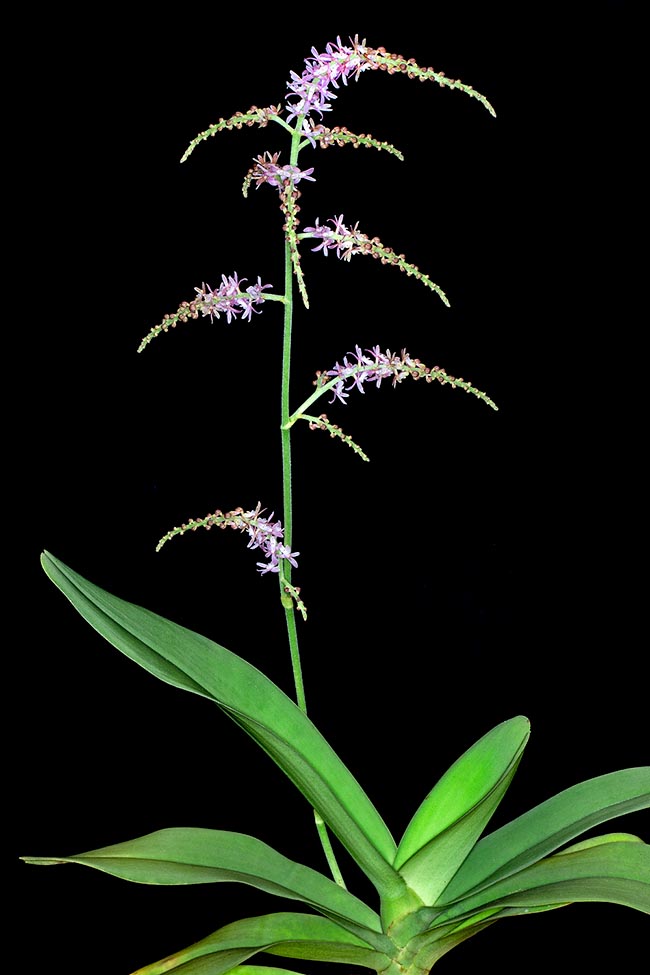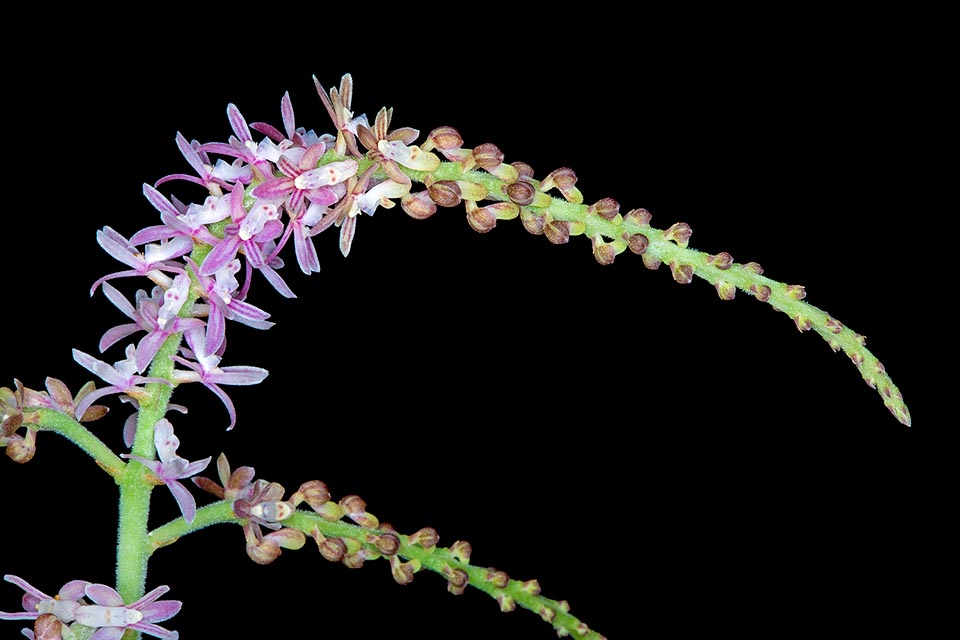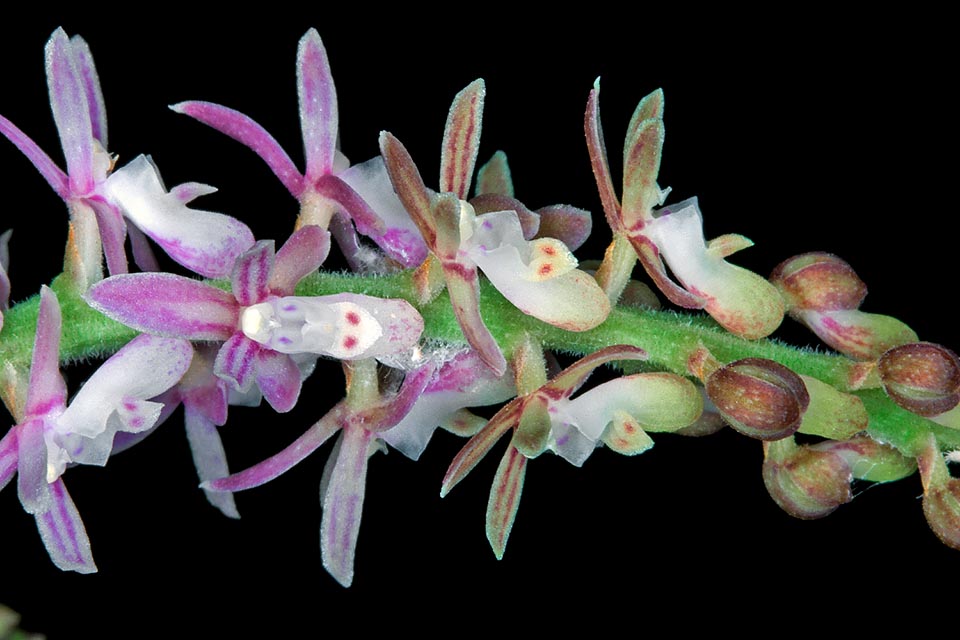Family : Orchidaceae

Text © Pietro Puccio

English translation by Mario Beltramini

South East Asian epiphyte orchid, the Pomatocalpa kunstleri has big leaves and a 10-40 cm solid erect stem © Giuseppe Mazza
The species is native to Borneo, Java, Malaysia, Maluku, New Guinea, Philippines, Thailand and Vanuatu where it grows in the humid forests from the sea level up to about 1000 m of altitude.
The name of the genus is the combination of the Greek substantives “πῶμα, τος” (poma, tos) = lid and “καλπίς, ίδος” (kalpis, idos) = urn, vase, with reference to the locular labellum; the specific name honours the German explorer and collector Herman H. Kunstler (1837-1887).
The Pomatocalpa kunstleri (Hook.f.) J.J.Sm. (1912) is a monopodial epiphyte species with erect stem, 10-40 cm long, robust, wholly covered by the imbricate foliar bases from where depart the aerial roots.
The leaves are alternate, distichous, nastriform with irregularly bilobate apex, thick, 15-30 cm long and 2,5-5 cm broad, of intense green colour.
The inflorescences, on a robust peduncle, 10-40 cm long, are axillary erect or drooping panicles, 10-45 cm long, with pubescent rachis and up to 8 spaced ramifications, slightly curved, carrying numerous tiny flowers, of about 6 mm of diameter, close to each other, violaceous white with darker stripes on sepals and petals; pedicel and ovary are about 2 mm long.
Oblong dorsal sepal with obtuse or acute apex, 3,5-6 mm and 1,5 mm broad, obovate free lateral sepals with obtuse or acute apex, falcate, 3-4,5 mm long and 1,5 mm broad.
Linear to spatulate free petals with obtuse or acute apex, 3,5-6 mm long and about 1 mm broad, saccate trilobate labellum, about 3,5 mm long, with almost squared erect lateral lobes, about 1 mm long and 1,5 mm broad, and linguiform median lobe, about 1,5 mm long and 0,5-1 mm broad.
It reproduces by seed, in vitro, but usually propagates by dividing the stem in two portions provided, each one, of a sufficient number of leaves and roots, the upper part is to be treated like an adult plant, the lower one, placed in an environment with high temperature and humidity, will produce from the dormant gemmae one or more plants that can be removed as soon as they will form their own radical apparatus.

The inflorescences, on a robust peduncle, last several months and can reach the 45 cm with even 8 curved ramifications © Giuseppe Mazza
Mini orchid of easy cultivation with the flowering lasting several months, adapts in intermediate as well as in warm greenhouses with high humidity, 70-80 %, aerated, placed in a luminous position, but not at the direct sun.
It can be mounted on branches, pieces of bark or rafts of various type covered by sphagnum, or cultivated in pot utilizing a draining and aerated compost that may be formed by medium sliced bark fragments and charcoal with addition of sphagnum.

Tiny close flowers, about 6 mm mm broad, violaceous white with darker stripes on sepals and petals. Easy to cultivate © Giuseppe Mazza
Regular watering, but without stagnations to avoid rooting rottenness, utilizing rainwater, de-mineralized or by reverse osmosis.
The species is inscribed in the appendix II of the CITES (species whose trade is internationally ruled).
Synonyms: Cleisostoma kunstleri Hook.f. (1894); Saccolabium pubescens Ridl. (1896); Saccolabium leucanthum Schltr. (1905); Pomatocalpa leucanthum (Schltr.) Schltr. (1913); Pomatocalpa merrillii Schltr. (1913).
